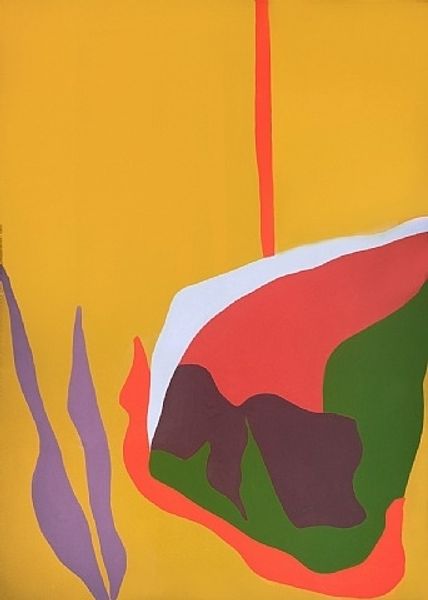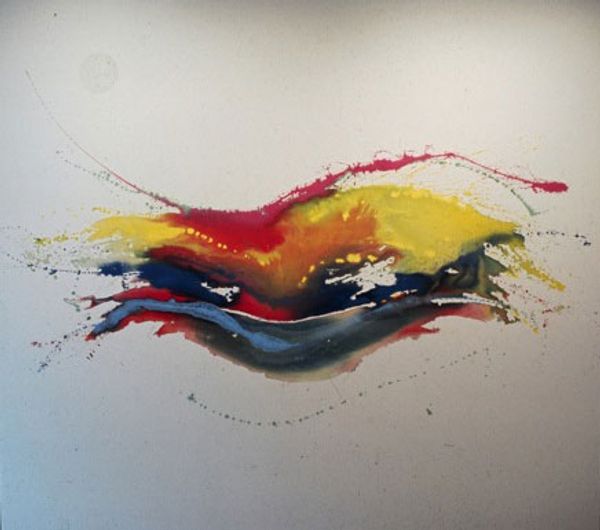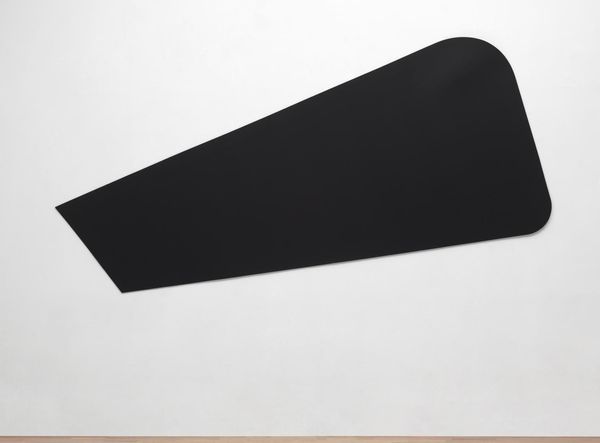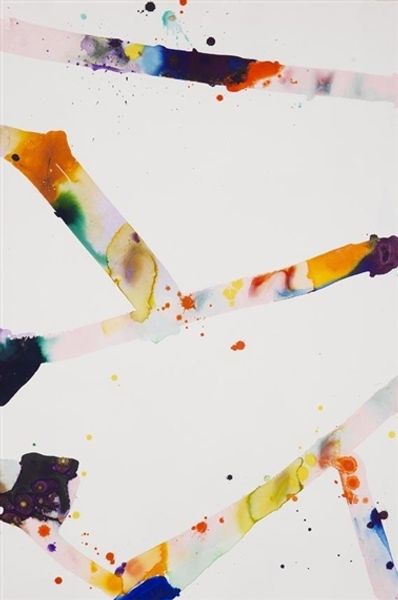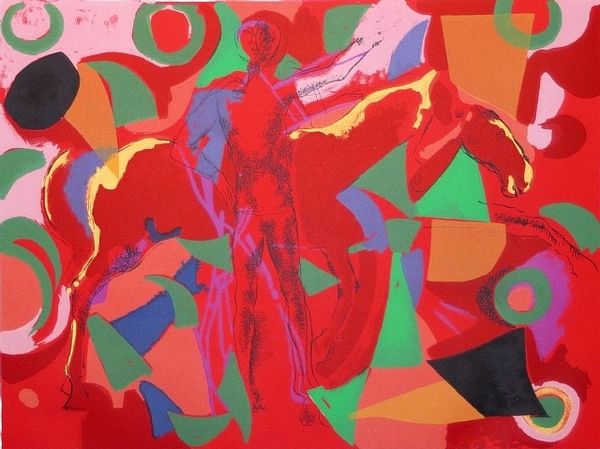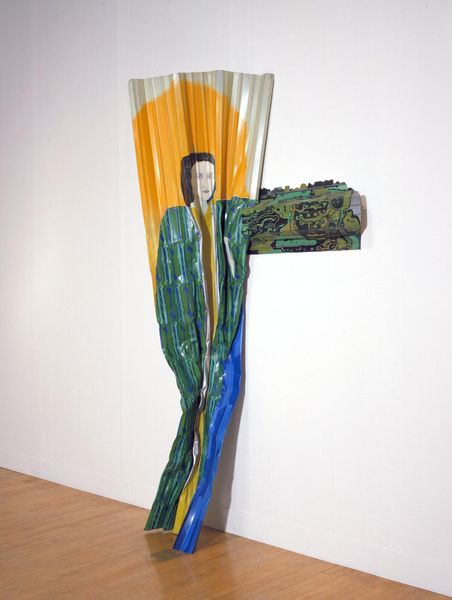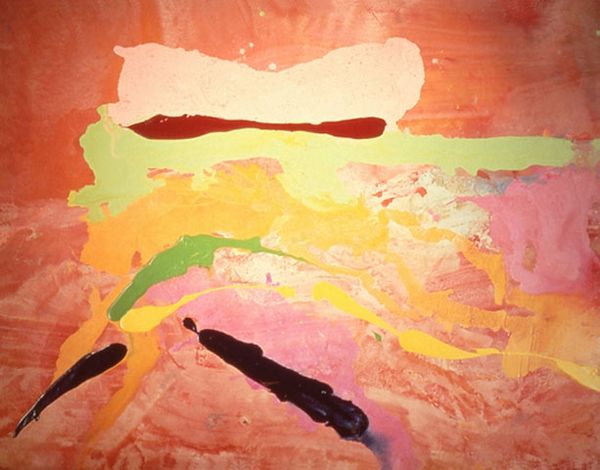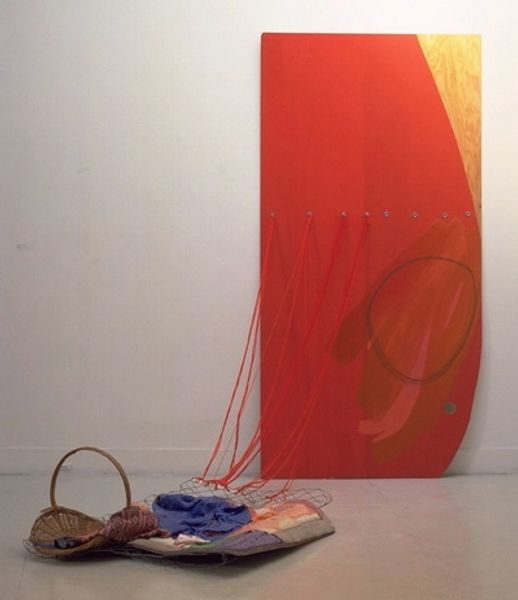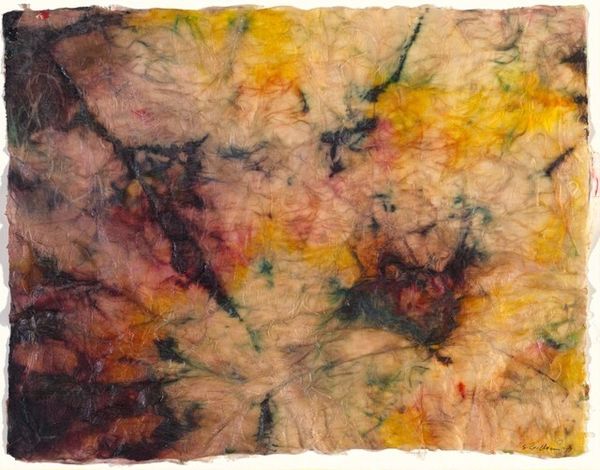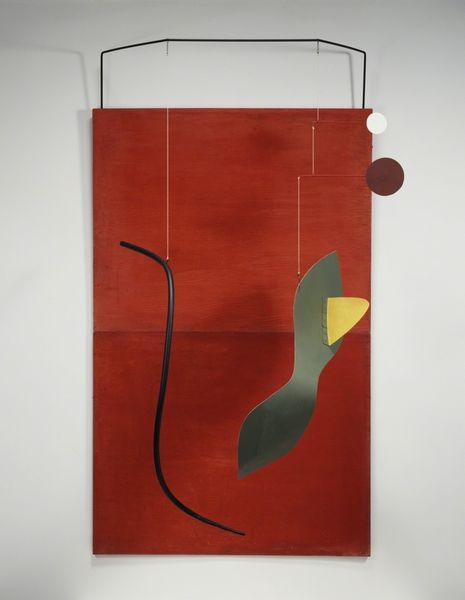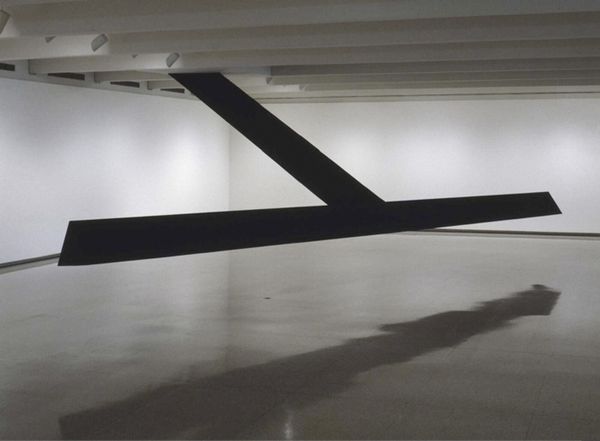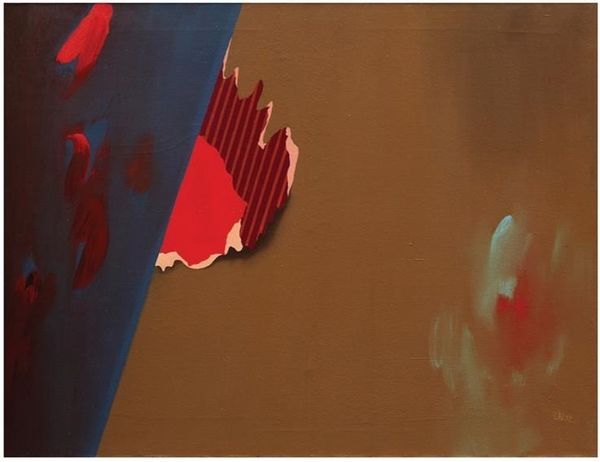
matter-painting, acrylic-paint
#
action-painting
#
abstract-expressionism
#
contemporary
#
matter-painting
#
acrylic-paint
#
form
#
abstraction
Copyright: Lynda Benglis,Fair Use
Curator: Lynda Benglis' "Odalisque: Hey Hey Frankenthaler," created in 1969. Acrylic paint directly on the floor, a real statement! What are your initial thoughts? Editor: Well, it certainly throws you for a loop! The colors are almost jarring, and the way it just sits there on the floor...it feels almost rebellious. Like paint escaped its canvas and decided to do its own thing. Curator: Benglis was playing with exactly that sense of challenging norms. Think about Abstract Expressionism at the time, so much heroic scale. Here, it is almost anti-heroic, right? Subverting traditional notions of sculpture and painting by bringing the process directly into the architectural space. Editor: I get that. The informality is striking. It's almost as if she’s saying, "Here's paint, here's the floor—deal with it." Was it trying to push back against the predominantly male art world? The “heroic” painting styles we often associate with, say, Pollock? Curator: Precisely! Benglis has often talked about challenging the male-dominated art world. She took inspiration, like in the work’s dedication to Frankenthaler, while establishing her voice. I also think about how the piece messes with gallery expectations –it's there, on the floor; you cannot avoid interacting with it. Editor: So, it's like a calculated mess? A way of taking the grand gestures of her male contemporaries and feminizing them, or rather, democratizing them by making the art literally accessible on the floor. Curator: Exactly! The form becomes secondary to the vibrant acrylic; the mess feels intentional and very engaging, it also suggests a performative and intuitive action. How space defines our encounter with art is being questioned right here. Editor: It makes me think about the temporary nature of some performances. You make me want to tread all over it to become one with the gesture. Curator: Benglis dares us to reimagine artistic hierarchies and how we engage physically and intellectually with artworks. The work becomes part of life; here you can see a critique against conventions while building and owning a completely individual visual language. Editor: This makes me appreciate Benglis' bravery. What an incredible work! Thanks for shedding light on this perspective.
Comments
No comments
Be the first to comment and join the conversation on the ultimate creative platform.

